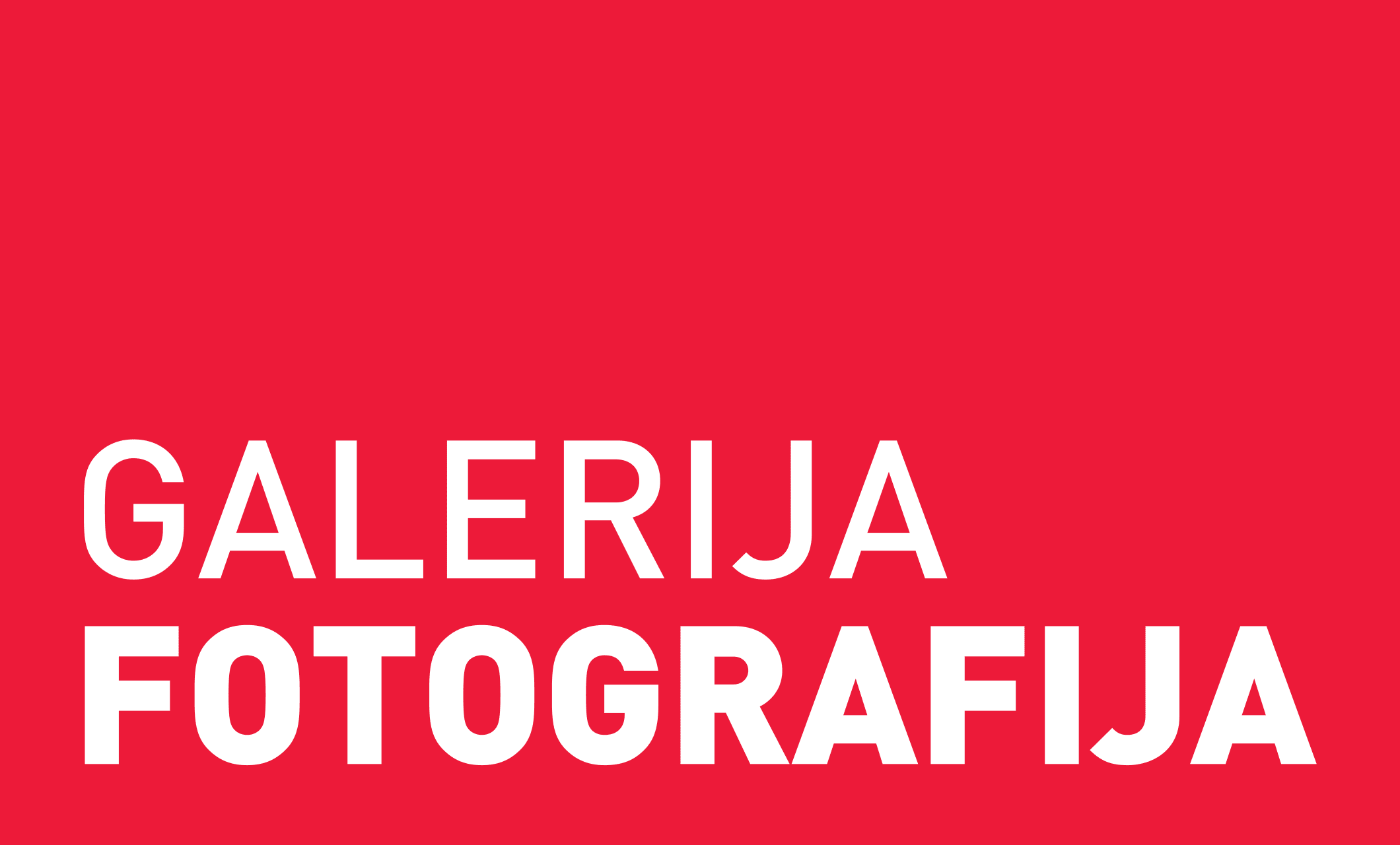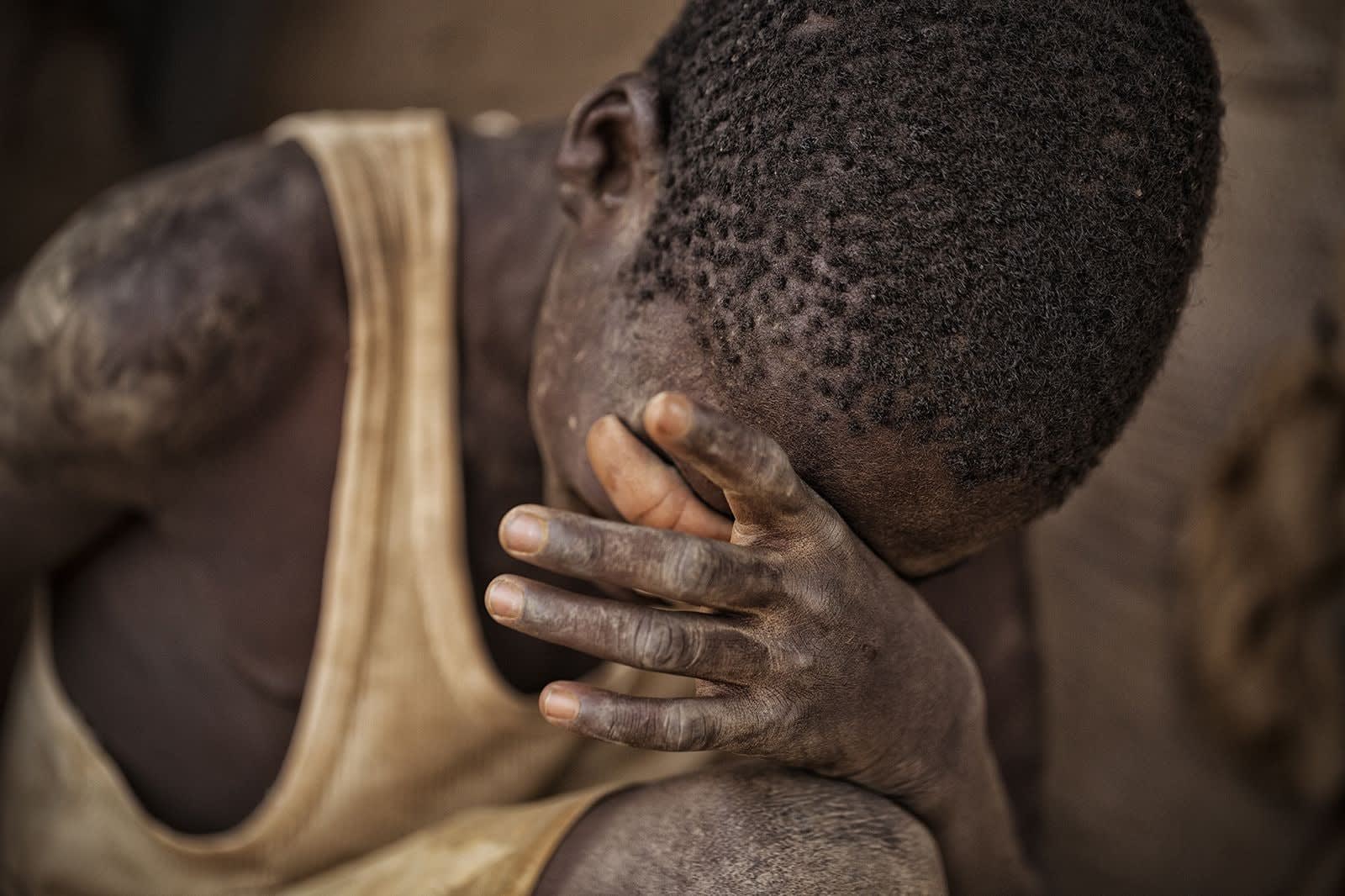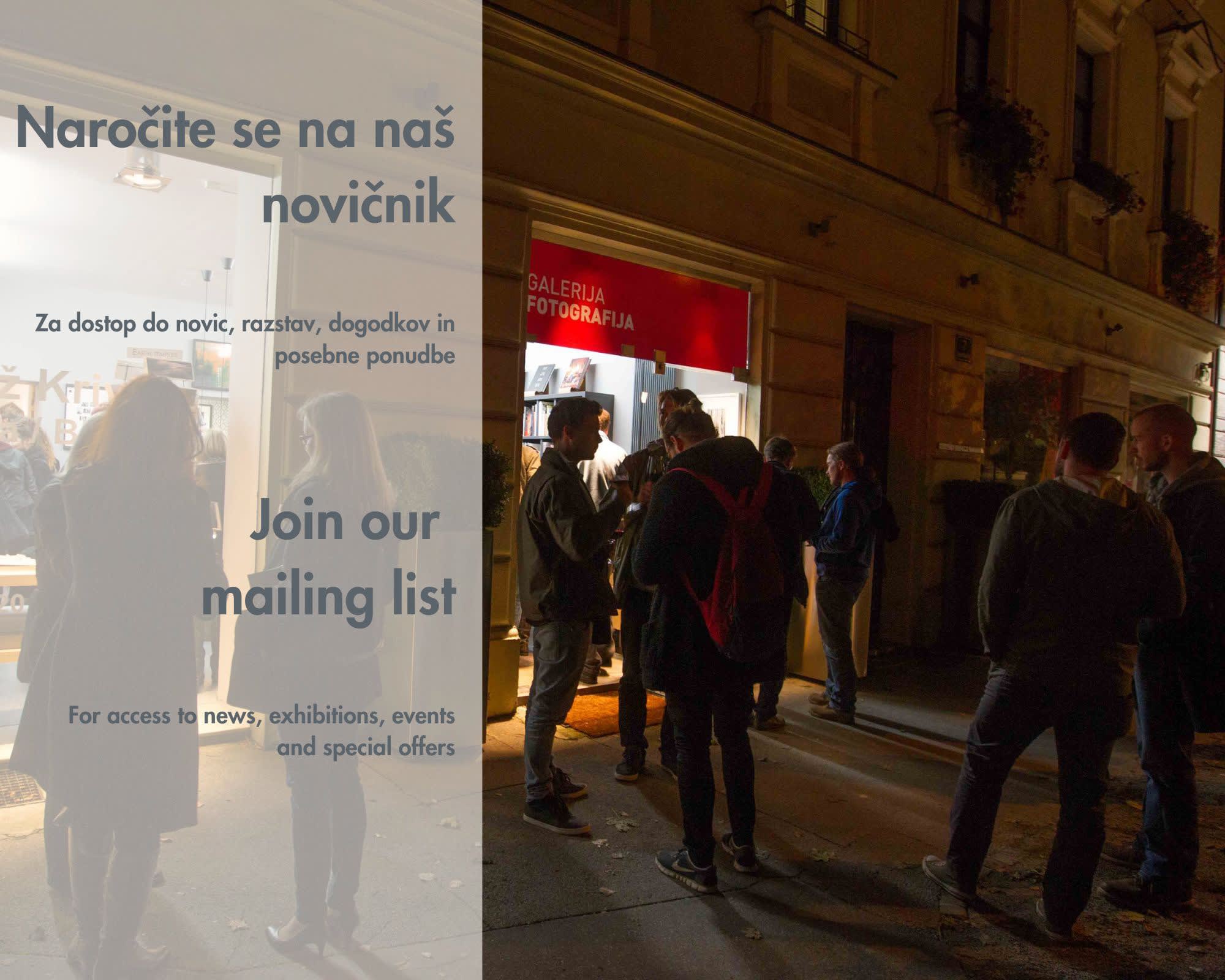Matjaž Krivic
Kopanje prihodnosti #3 / Digging the Future #3, 2015
digitalni tisk na arhivski papir / digital print on archival paper
30 x 45 cm,
81 x 122 cm
81 x 122 cm
edicija 5 + 2 AP / edition 5 + 2 AP
Series: KOPANJE PRIHODNOSTI / DIGGING THE FUTURE
podpisana in datirana / signed and dated
For English version please scroll down. O SERIJI Kopanje prihodnost: Življenje delavcev rudnika zlata v Burkini Faso »Kopanje prihodnosti« je štiriletni projekt v trajanju, ki prikazuje nevarno življenje večinoma mladoletnih...
For English version please scroll down.
O SERIJI
Kopanje prihodnost: Življenje delavcev rudnika zlata v Burkini Faso
»Kopanje prihodnosti« je štiriletni projekt v trajanju, ki prikazuje nevarno življenje večinoma mladoletnih zlatokopov na območju Sahela v severovzhodni Burkini Faso. Je zgodba o tveganju in modernem suženjstvu, ki se dogaja v glavnem zaradi neusihajočega povpraševanja po zlatu v razvitem svetu. Pripoveduje zgodbo o majhnem kraju Bani, kjer v rudnikih zlata vsak dan dela okrog 15.000 ljudi, tretjina med njimi otrok. To so otroci rudnikov in za mnoge med njimi so rudniki edini dom, ki ga poznajo. Vsi so pogrešljivi delavci, nenehno izpostavljeni strupenim kemikalijam, kot so svinec, živo srebro in cianid, ki zastrupljajo njihova telesa in vodo, ki jo pijejo …
ABOUT THE SERIES
Digging the Future: Life in the Burkina Faso artisanal Gold mines
Yakuba emerges from the 50m deep hole after another grueling 11 hour long workday underneath the panorama of eastern Burkina Faso. Unfortunately, he and his team did not manage to find any gold today … Last year his uncle and two of his friends died when a nearby mine collapsed. News? Not at all, it is a part of the everyday life in this part of the country.
What sort of a future is the barely sixteen year old Yakuba digging for himself, as he and his companions keep bringing bags full of stones from the depths of the shafts - some up to 60 meters deep and incredibly narrow - and as he breaths the black earth full of poisonous lead, day in, day out? Future? Anything that keeps him from thinking about today or tomorrow: while grinding the ore, the heavy metals attack his lungs, find their way into the soil and into his drinking water. The mercury and cyanide that he needs in order to extract the gold which then shine for the clients destroy his body and poison the soil he lives in forever.
About 15,000 miners work in the area just around Bani. A third of them are children. They are the children of the mines. Most of them have never been to school. For many of them, the mines are their only home. The International Labor Organisation considers mining one of the worst forms of child labor. This is because of the immediate risks and long-term health problems it poses with exposure to dust, toxic chemicals and heavy metals on top of back-breaking manual labor.
O SERIJI
Kopanje prihodnost: Življenje delavcev rudnika zlata v Burkini Faso
»Kopanje prihodnosti« je štiriletni projekt v trajanju, ki prikazuje nevarno življenje večinoma mladoletnih zlatokopov na območju Sahela v severovzhodni Burkini Faso. Je zgodba o tveganju in modernem suženjstvu, ki se dogaja v glavnem zaradi neusihajočega povpraševanja po zlatu v razvitem svetu. Pripoveduje zgodbo o majhnem kraju Bani, kjer v rudnikih zlata vsak dan dela okrog 15.000 ljudi, tretjina med njimi otrok. To so otroci rudnikov in za mnoge med njimi so rudniki edini dom, ki ga poznajo. Vsi so pogrešljivi delavci, nenehno izpostavljeni strupenim kemikalijam, kot so svinec, živo srebro in cianid, ki zastrupljajo njihova telesa in vodo, ki jo pijejo …
ABOUT THE SERIES
Digging the Future: Life in the Burkina Faso artisanal Gold mines
Yakuba emerges from the 50m deep hole after another grueling 11 hour long workday underneath the panorama of eastern Burkina Faso. Unfortunately, he and his team did not manage to find any gold today … Last year his uncle and two of his friends died when a nearby mine collapsed. News? Not at all, it is a part of the everyday life in this part of the country.
What sort of a future is the barely sixteen year old Yakuba digging for himself, as he and his companions keep bringing bags full of stones from the depths of the shafts - some up to 60 meters deep and incredibly narrow - and as he breaths the black earth full of poisonous lead, day in, day out? Future? Anything that keeps him from thinking about today or tomorrow: while grinding the ore, the heavy metals attack his lungs, find their way into the soil and into his drinking water. The mercury and cyanide that he needs in order to extract the gold which then shine for the clients destroy his body and poison the soil he lives in forever.
About 15,000 miners work in the area just around Bani. A third of them are children. They are the children of the mines. Most of them have never been to school. For many of them, the mines are their only home. The International Labor Organisation considers mining one of the worst forms of child labor. This is because of the immediate risks and long-term health problems it poses with exposure to dust, toxic chemicals and heavy metals on top of back-breaking manual labor.


